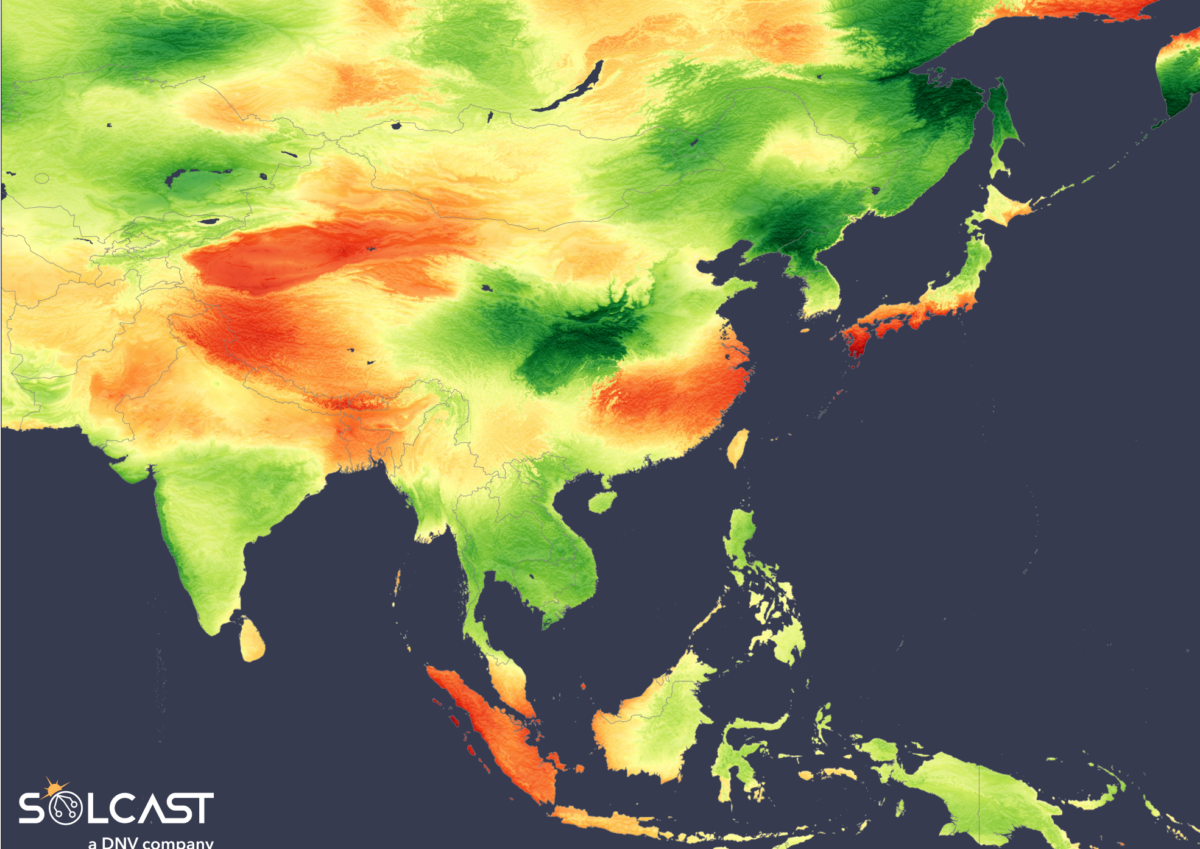Diverse weather conditions across Asia resulted in varying solar impacts in July. Typhoon Gaemi led to decreased irradiance across the Philippines and a record-breaking monsoon season in India dropped average irradiance by 10% across most of the country. Meanwhile, parts of China and Japan saw increased irradiance due to a strong subtropical ridge, according to analysis using the Solcast API.

Alongside extreme winds which can devastate power infrastructure, typhoons bring heavy rain and cloud, leading to lowered irradiance. Typhoon Gaemi was no exception, impacting irradiance levels in the Philippines in mid-July. The monthly mean irradiance was down by 10% from long term July averages.
Gaemi formed over the Pacific Ocean to the west of the Philippines, in an area with warm sea surface temperatures 1 to 2°C above the July average.

Tracking northwest under the influence of a mid-atmospheric pressure ridge, Typhoon Gaemi moved past the Philippines and went on to impact Taiwan before weakening over the Fujian province of China. The typhoon’s impact on irradiance along its track aside, Taiwan and much of China experienced increased sunshine in the first half of the month, with less than half the average rainfall leading to average or above average irradiance for much of Eastern China.
India experienced an above-average monsoon season, with the southwest monsoon spreading across the subcontinent by July 2, about a week earlier than usual. This early onset led to higher-than-normal rainfall in July, as moist southwesterly winds brought significant precipitation. Some regions saw daily rainfall averages of up to 20mm, nearly double the usual amount, resulting in a 10% decrease in irradiance across the south of the country. The west coast of the country was hit particularly hard, seeing the biggest irradiance reductions, and Delhi recorded a near 90-year record with 280mm of rainfall in a single day in June.

In contrast, China and Japan recorded their warmest July on record due to an abnormally strong subtropical ridge. This atmospheric condition reduced cloud cover and led to increased sunshine, resulting in irradiance anomalies of over 15%. Temperatures soared above 38 degrees celsius across Japan, while Hong Kong experienced a monthly mean minimum temperature of 28 degrees celsius.
Solcast produces these figures by tracking clouds and aerosols at 1-2km resolution globally, using satellite data and proprietary AI/ML algorithms. This data is used to drive irradiance models, enabling Solcast to calculate irradiance at high resolution, with typical bias of less than 2%, and also cloud-tracking forecasts. This data is used by more than 300 companies managing over 150GW of solar assets globally.
The views and opinions expressed in this article are the author’s own, and do not necessarily reflect those held by pv magazine.
This content is protected by copyright and may not be reused. If you want to cooperate with us and would like to reuse some of our content, please contact: editors@pv-magazine.com.



By submitting this form you agree to pv magazine using your data for the purposes of publishing your comment.
Your personal data will only be disclosed or otherwise transmitted to third parties for the purposes of spam filtering or if this is necessary for technical maintenance of the website. Any other transfer to third parties will not take place unless this is justified on the basis of applicable data protection regulations or if pv magazine is legally obliged to do so.
You may revoke this consent at any time with effect for the future, in which case your personal data will be deleted immediately. Otherwise, your data will be deleted if pv magazine has processed your request or the purpose of data storage is fulfilled.
Further information on data privacy can be found in our Data Protection Policy.